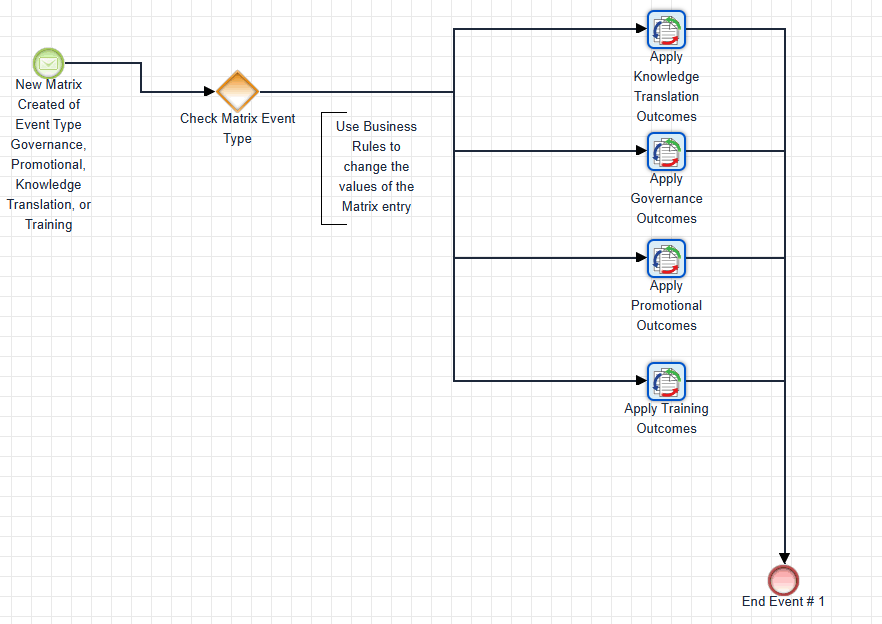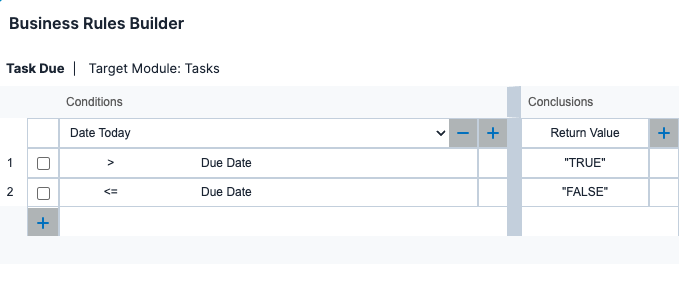In the documentation it is stated that a business rule action element must be followed by a gateway element that then uses the return value from the rule to carry out actions depending on that value.
I have inherited some process definitions that don't do this - see first screenshot - they use a business rule that sets a dummy return value (it uses the name of a field and this value is not used again as far as I can tell) and then uses the conclusions section of the rule set to update fields in the target record directly. In the process definition, the business rule is followed immediately by an end event (see second image). This process works fine, and has done for several years. I think it is probably simpler than adding the gateway and further action fields. If you can update fields this way (which is mentioned in the documentation) why would you then need to add a gateway and subsequent action elements also?
I am wondering if this is bad practice for some reason? I can see that it wouldn't work for anything other than updating fields in the target records, but does anyone else use this approach?
I am planning to overhaul several of these process definitions so would like to make them consistent, and not inadvertently cause myself problems later on.
Thanks!
Ann
(using sell advanced 14.2 on cloud)



